Key takeaways:
- Found footage films create a sense of realism and emotional engagement, blurring the line between fiction and reality.
- The genre utilizes immersive storytelling through first-person perspectives, enhancing audience connection with characters’ experiences.
- The rise of independent cinema has allowed diverse narratives and voices, enriching the found footage genre with unique storytelling methods.
- The emotional impact of found footage films often stems from their unsettling authenticity, eliciting visceral reactions and lingering feelings post-viewing.
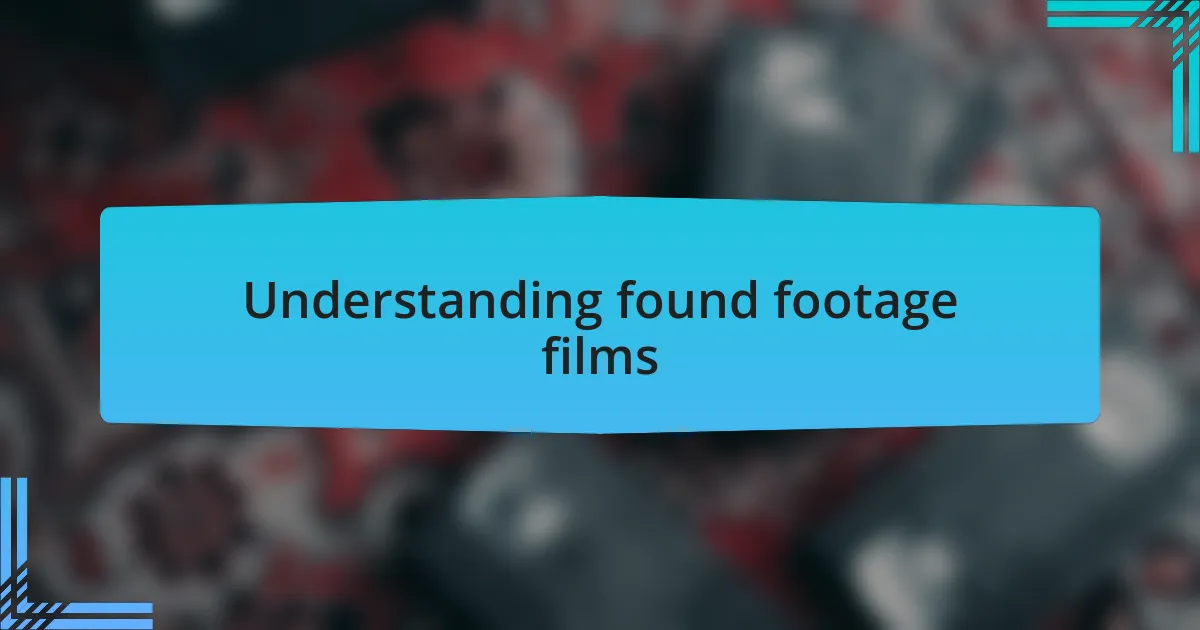
Understanding found footage films
Found footage films are fascinating in their ability to create a sense of realism. They often present a narrative through supposedly discovered recordings, pushing the boundaries of traditional storytelling. I remember the first time I watched “The Blair Witch Project” and felt an uncanny blend of fear and disbelief, almost questioning if what I saw could have really happened.
At their core, these films engage viewers by invoking a visceral emotional response. When I see shaky cam footage and raw audio, it pulls me into a world that feels genuine, like I’m peeking into someone else’s terrifying reality. Doesn’t that make you feel a deeper connection to the characters, as though you’re experiencing their journey firsthand?
What intrigues me most is the way found footage blurs the lines between fiction and reality. I often wonder—how much of our daily lives is captured and left unedited? As I reflect on that, it becomes apparent that these films tap into our innate curiosity about the unknown, compelling us to explore not just what is shown, but also what lies beneath the surface of human experience.
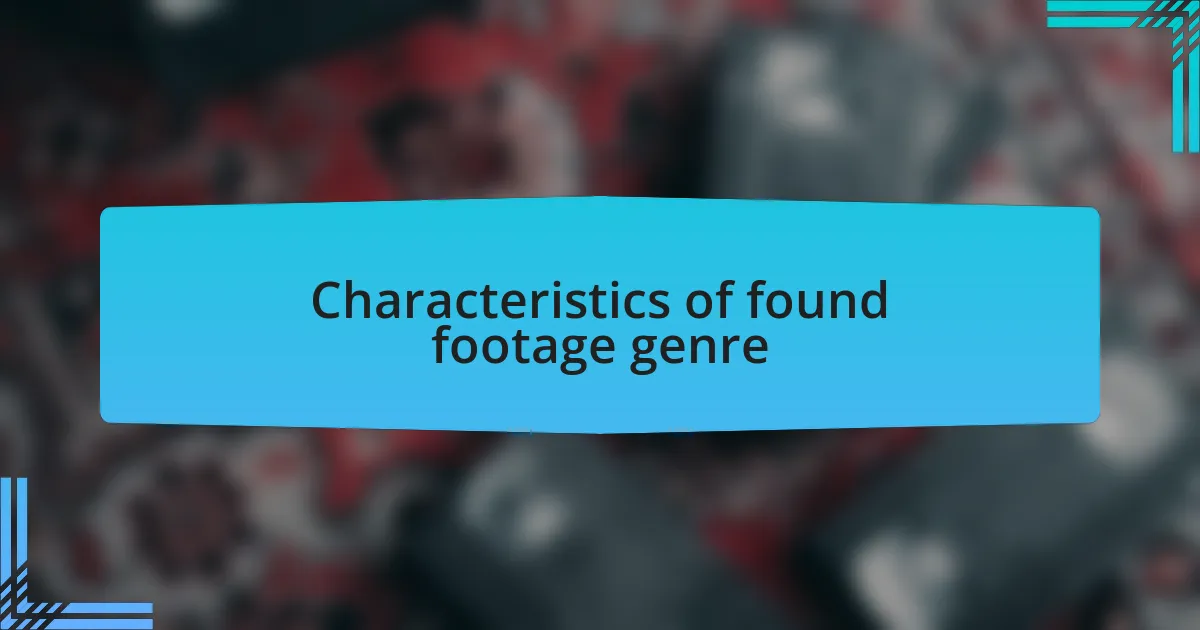
Characteristics of found footage genre
One defining characteristic of found footage films is their immersive storytelling technique. By presenting a narrative through a first-person perspective, these films allow viewers to feel as though they are part of the events unfolding. I recall watching “Paranormal Activity” and being struck by how the static shots of a bedroom amplified my tension. It made me question, what would I do in that same situation?
Authenticity plays a crucial role in this genre. The raw and often unpolished nature of the footage fosters a sense of realism that polished cinematic techniques can’t replicate. I’ve found myself engaging with these films on a more emotional level, feeling the fear and vulnerability of the characters. It’s almost like I’m not just watching a film; I’m experiencing their nightmare.
Another intriguing aspect is how these films often mix mundane moments with horror, enhancing the shock when something unsettling occurs. I remember a particularly gripping scene from “The Last Exorcism,” where the protagonist is filming a church service. That stark contrast between everyday life and the lurking dread made me think: how easily could the extraordinary hide behind the ordinary in our own lives? It’s this ability to intertwine terror within familiar contexts that truly captivates me about found footage cinema.
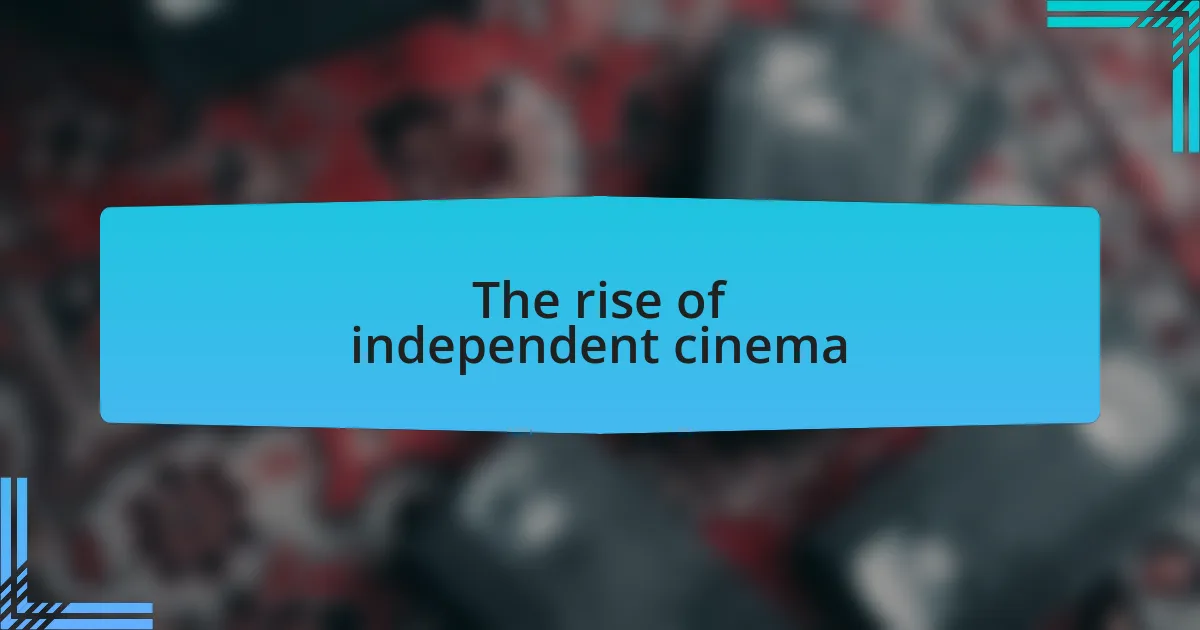
The rise of independent cinema
The rise of independent cinema has fundamentally changed the landscape of filmmaking. As technology has become more accessible, aspiring filmmakers have seized the opportunity to tell their stories outside traditional studio systems. I remember attending a local film festival where I watched a gripping indie film—it felt raw and authentic, making me realize that great storytelling doesn’t always come from big budgets.
This movement has been fueled by the desire for creativity and unique perspectives. I often find myself drawn to the unconventional narratives and diverse voices emerging from independent filmmakers. It poses an interesting question: what stories are missing from mainstream cinema? Each indie film I encounter seems to answer that call, offering fresh ideas that challenge the status quo.
Moreover, the community of independent filmmakers is often driven by passion and collaboration. I admire how these creatives come together, sharing resources and expertise to bring their visions to life. It’s inspiring to see how their determination translates into powerful films, reminding me that cinema thrives not just on polished production, but on the heart and soul poured into each frame.
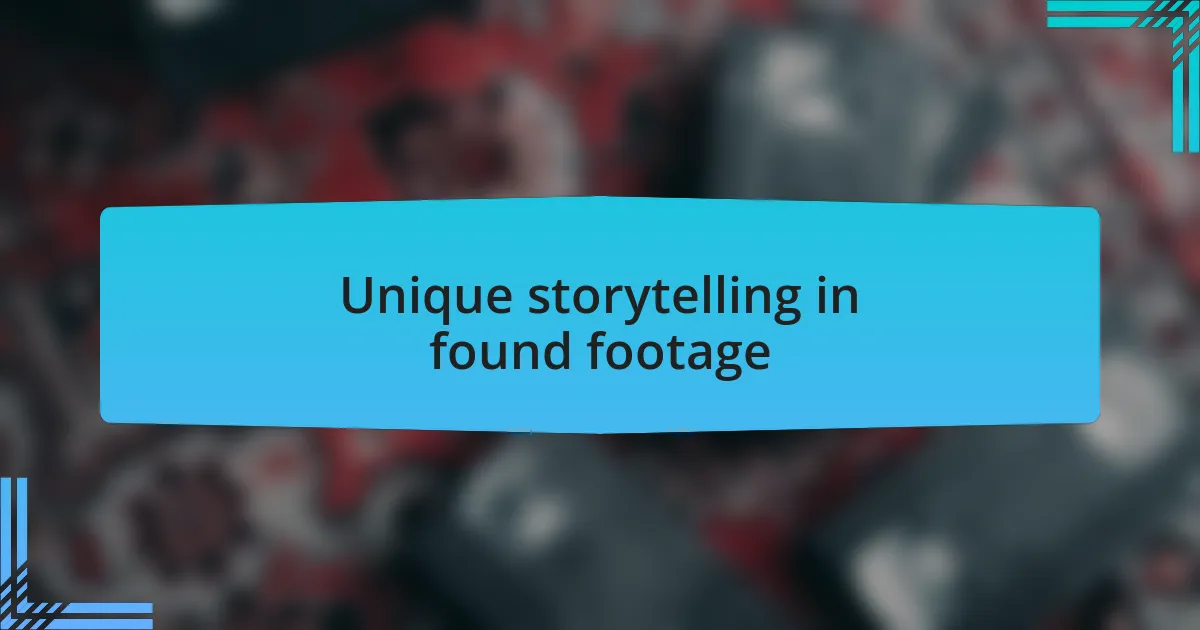
Unique storytelling in found footage
The beauty of found footage films lies in their ability to immerse viewers in a narrative that feels personal and immediate. I recall watching a found footage horror film that left me disturbed long after it ended, not just because of the scares, but due to the raw, unpolished feel of the footage. This style allows filmmakers to create a sense of authenticity that traditional narratives often struggle to capture.
There’s something incredibly powerful about witnessing a story unfold through the lens of a character’s perspective. When I think about those moments in found footage films, it often feels like I’m peering into someone’s life, an intimate glimpse shared only with me. Isn’t it fascinating how this technique can evoke such genuine emotional responses, making me question what’s real and what’s fiction?
Moreover, the limitations of found footage can inspire creativity in unexpected ways. I was captivated by a low-budget flick that managed to tell a compelling story using just a handheld camera and minimal dialogue. It made me appreciate how constraints can foster innovation, leading to unique storytelling approaches that push the boundaries of conventional filmmaking. What treasures await in the hands of passionate filmmakers willing to explore this distinctive style?
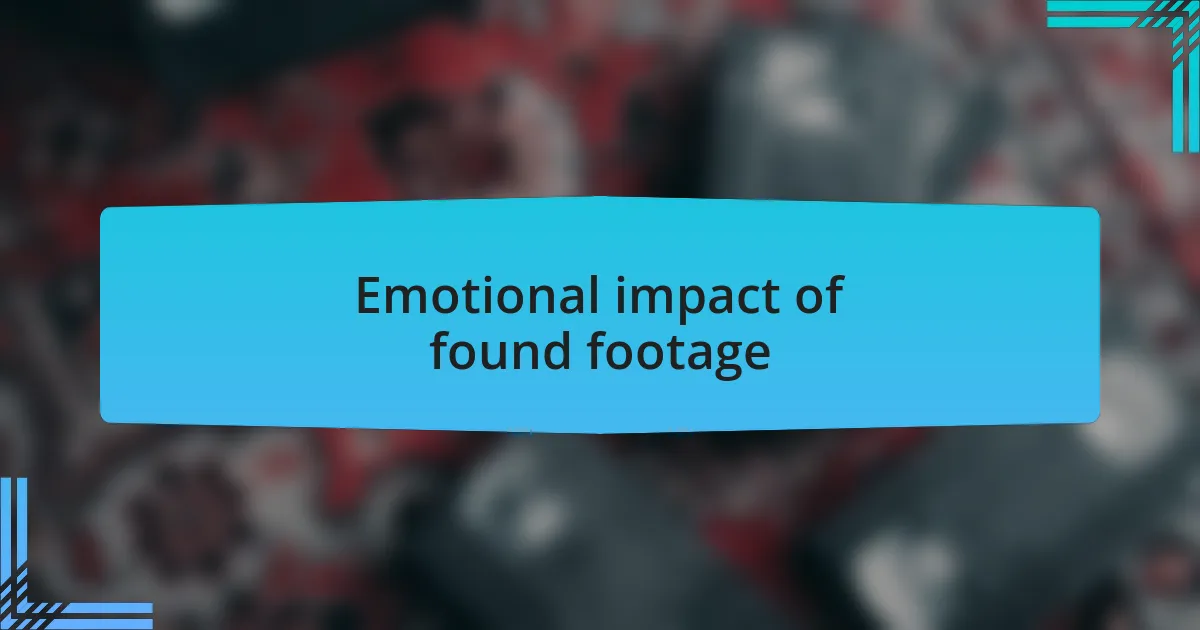
Emotional impact of found footage
The emotional impact of found footage films often lies in their capacity to mirror the chaotic and unpredictable nature of real life. I remember viewing a found footage film that depicted a missing person’s story through grainy video clips and shaky shots. The unsettling realism made me feel as though I was part of the investigation, grappling with the uncertainty and fear that the characters experienced.
When I reflect on these films, I can’t help but notice how the unsettling authenticity can elicit visceral reactions. I’ve found myself gasping or even clutching my seat during an intense scene, largely because it felt like I was observing a genuine, unfiltered moment rather than a scripted performance. Isn’t it intriguing how such a simple technique can conjure such profound feelings, blurring the line between fiction and reality?
This emotional resonance usually lingers well after the credits roll. I distinctly recall the lingering sense of dread after watching a particular entry in this genre; it wasn’t just the plot that haunted me, but the feeling that the characters, filmed in real places and situations, could easily mirror the lives of people I know. This element of relatability adds depth to the viewer’s experience, drawing us closer to the characters’ emotional landscapes and rendering their journeys painfully vivid.
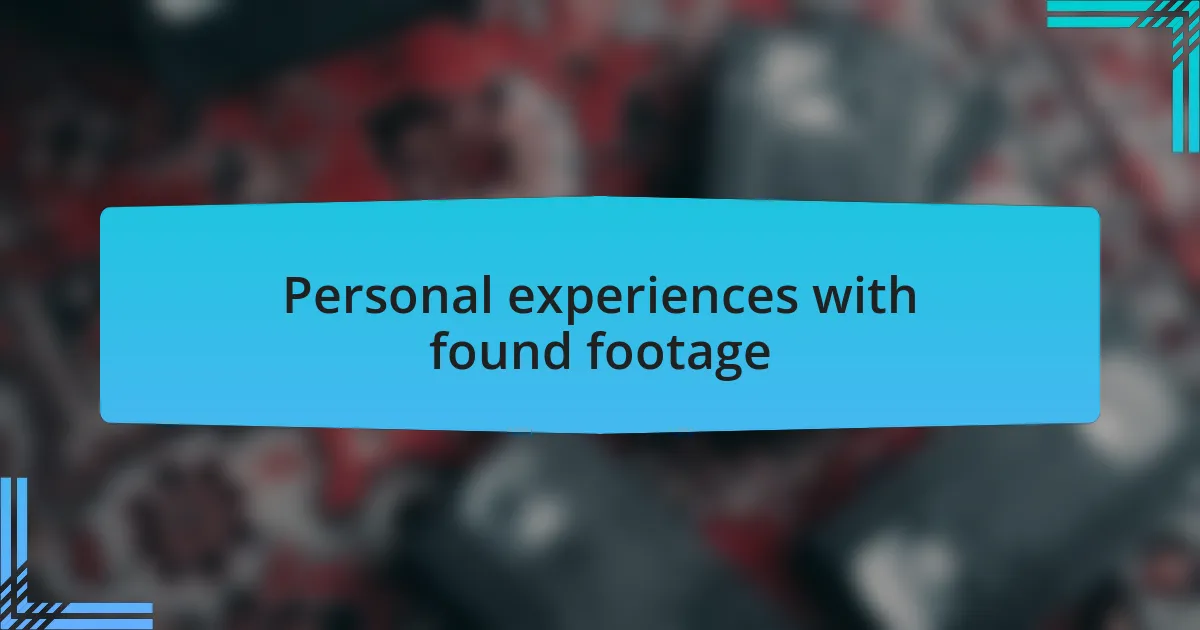
Personal experiences with found footage
As I think back on my journey with found footage films, I recall the first time I watched one that truly shook me. It was a small indie project set in a haunted house, where the character’s fear felt all too palpable through the camera’s lens. In those moments, I felt a rush of adrenaline, as if I were right there with them, trying to escape a situation that felt all too real. Isn’t it fascinating how the intimacy of a shaky camera can amplify the stakes?
There was another instance where I stumbled upon a film that used a documentary style to explore urban legends. I remember feeling both entertained and horrified, questioning the very nature of truth in storytelling. The way the filmmakers wove in interviews with ‘witnesses’ made me wonder how much of their fear was genuine versus exaggerated for effect. This layering of reality and fiction really got me thinking: how do we discern truth in a world so often steeped in myth?
On a deeper level, these experiences have shaped my appreciation for this genre. I recall a particular film that left me pondering long after it ended. The characters, portrayed as everyday people, faced circumstances that reflected profound human fears—loss, isolation, and uncertainty. The emotional connection I forged with them was unlike anything I had experienced before, prompting me to question my feelings about vulnerability. How can a simple handheld camera evoke such complexity in emotions?
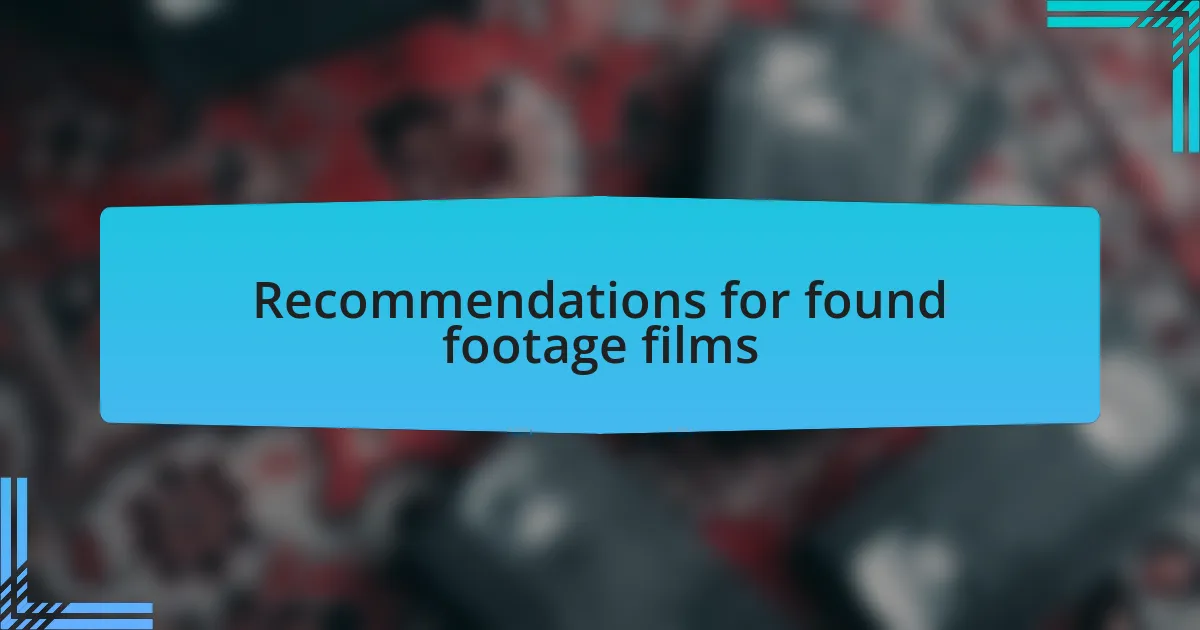
Recommendations for found footage films
I highly recommend checking out “The Blair Witch Project,” a classic that exemplifies the essence of found footage. I still remember the thrill of watching it for the first time, feeling as if I was lost in those dark woods alongside the characters. Its minimalistic approach, where fear is built through suggestion rather than explicit horror, draws you in and leaves a lingering sense of dread. Isn’t it remarkable how a simple camera can transform a quiet forest into a place of terror?
Another gem to explore is “Lake Mungo.” This film’s documentary style, combined with personal interviews and family dynamics, is haunting in a uniquely emotional way. I found myself fully immersed in the characters’ grief and confusion as they navigated their loss. What truly captivated me was how the story peeled back layers of mystery, forcing me to confront my fears about the unknown. Have you ever felt this uncanny blend of sadness and fear?
If you’re up for something more contemporary, “Found Footage 3D” is both a clever homage to and a subversion of the genre. I recall chuckling at its self-awareness while still jumping at the eerie moments. The filmmakers skillfully balanced humor with genuine suspense, making me think about the boundaries of what we do for entertainment. How does a film manage to both frighten and amuse, all while keeping the viewer glued to their seat?